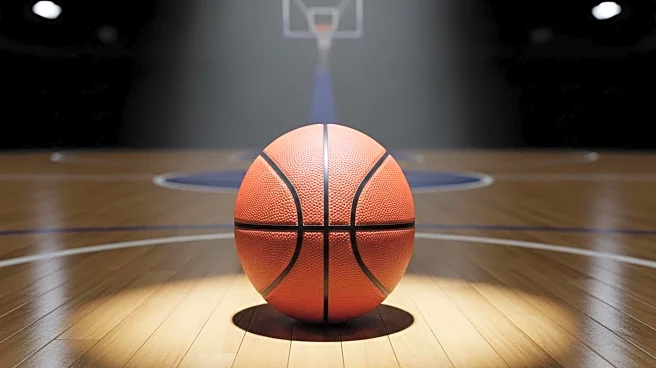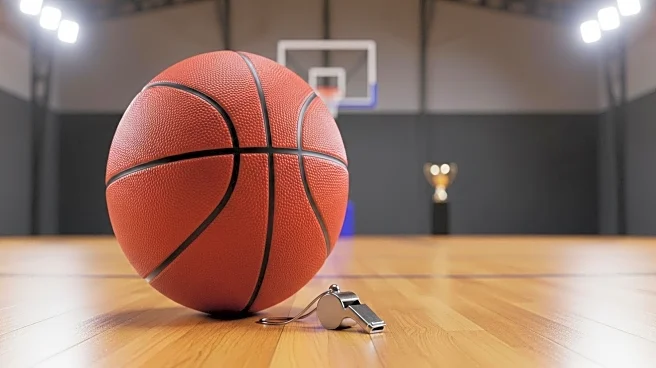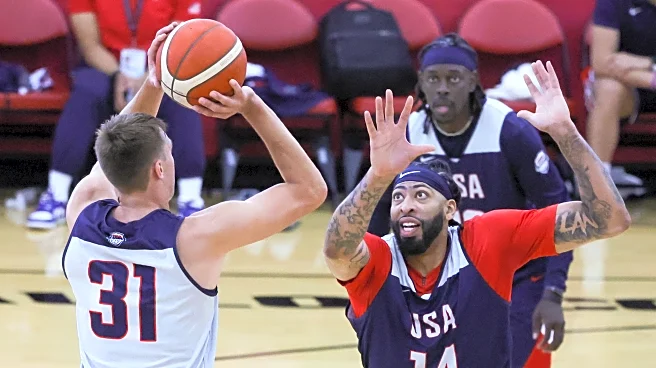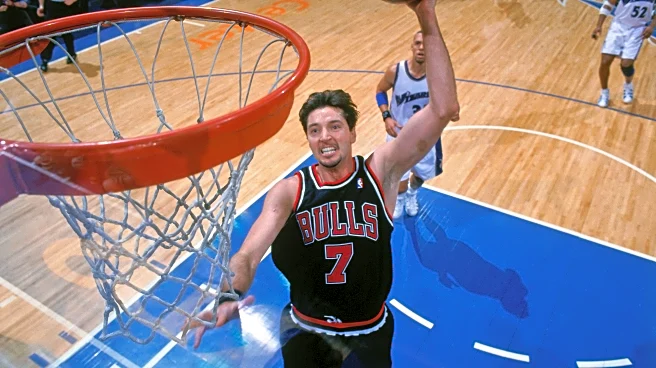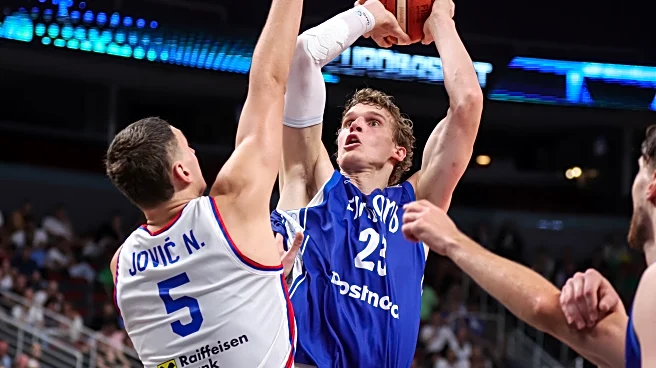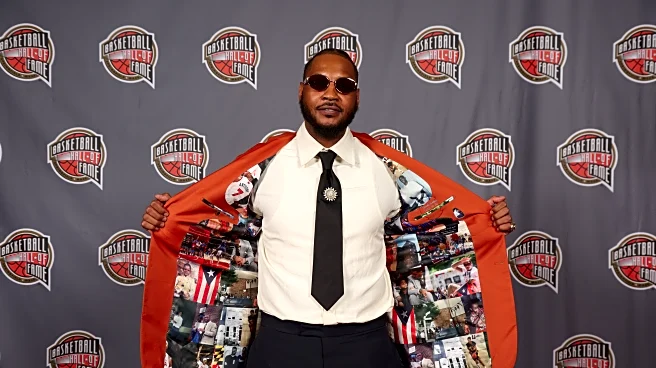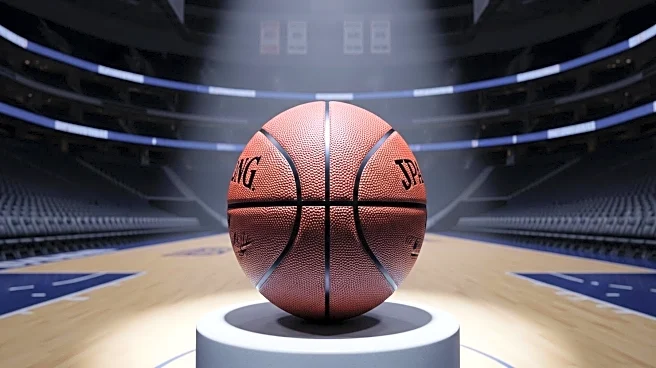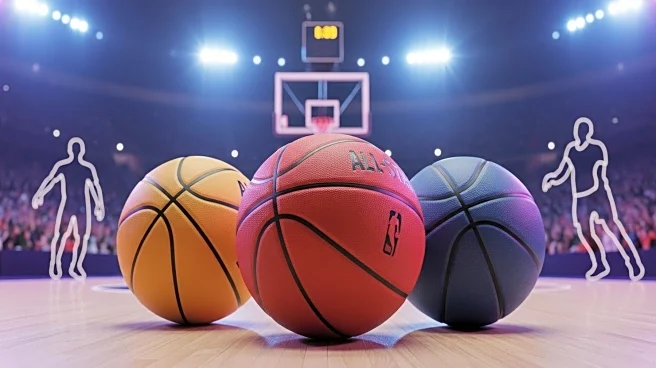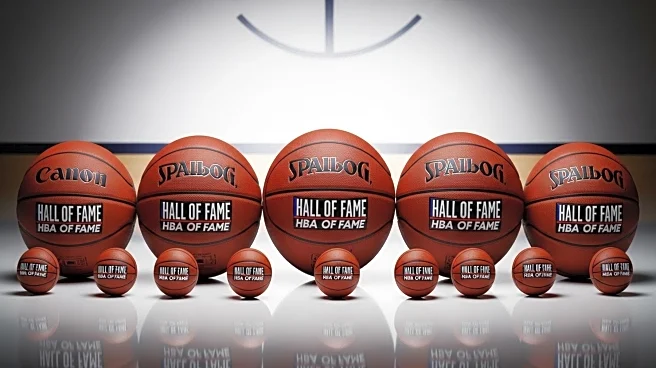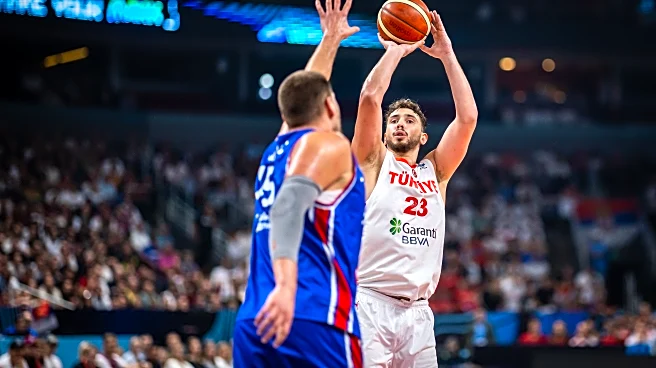What's Happening?
Jimmy Butler, a prominent NBA player, is being considered among the non-top-75 locks for the Basketball Hall of Fame. Despite having five All-NBA selections, Butler is recognized as the best player on two Finals teams, which bolsters his Hall of Fame candidacy. The discussion arises as the Basketball Hall of Fame prepares to induct a new class, prompting evaluations of current players' chances for future induction. Historical trends suggest that many active players will eventually be honored in Springfield, with an average of 34 players per year from 1955 to 2005 becoming Hall of Famers. Butler's achievements, alongside other notable players like Nikola Jokic and Kyrie Irving, are being scrutinized as part of this broader analysis.
Why It's Important?
The evaluation of Jimmy Butler's Hall of Fame prospects is significant as it reflects the criteria and achievements necessary for induction into one of basketball's most prestigious honors. Butler's recognition as a key player on Finals teams underscores the importance of individual contributions to team success in Hall of Fame considerations. This analysis impacts how current players are perceived and valued within the league, influencing contract negotiations, endorsements, and legacy. For fans and stakeholders, understanding these dynamics provides insight into the evolving standards of excellence in professional basketball.
What's Next?
As the Hall of Fame continues to induct new classes, the criteria for selection may evolve, potentially affecting Butler and other players' chances. Stakeholders, including teams and agents, will likely monitor these developments closely, as they can influence player marketability and career decisions. The ongoing analysis of active players' Hall of Fame prospects will continue to shape discussions around player achievements and historical significance within the NBA.
Beyond the Headlines
The consideration of players like Jimmy Butler for the Hall of Fame also highlights broader cultural and ethical dimensions within sports. It raises questions about the balance between individual accolades and team success, as well as the role of media and public perception in shaping a player's legacy. Additionally, it reflects the changing landscape of basketball, where diverse skills and contributions are increasingly recognized and valued.
